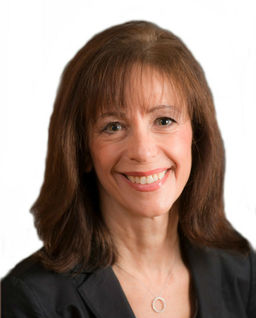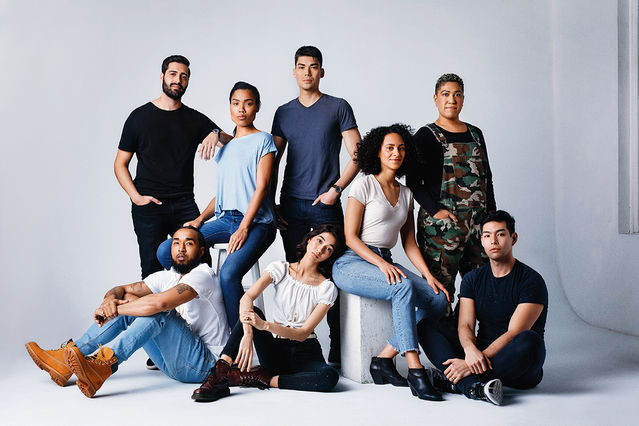Keep Your Self-Talk Positive by Focusing on the Here and Now
New research shows how to overcome negative ways of talking to yourself.
As you go about your day, do you find yourself constantly keeping up your own internal monologue? Are you even aware that you’re doing this? Perhaps you’ve been “interrupted” in a lengthy conversation with yourself while walking down what you thought was an empty hallway. There you were, leaving your office or apartment, while your inner voice accidentally became your outer voice. After a few odd glances from a coworker or neighbor, you went on your way, feeling just a tad embarrassed, or worse, if your little chat with yourself was sprinkled with some R-rated vocabulary.
Putting your thoughts into actual speech that others can hear is only one consequence of being a constant internal “monologuer.” What if that inner voice contains a constant drumbeat of self-criticism? You stew for what seems like hours, if not days, over a real or possibly imagined failing or mistake. Round and round go your thoughts about how you could have acted differently in a situation such as not being “nice enough” (in your opinion) to someone you care about, or how you got the wrong answer to a question in a public situation that caused you to look uninformed. As you continue to punish yourself over this unwanted outcome, your self-esteem and mood can only take a drubbing.
There can, however, be adaptive features to self-talk, particularly the kind that is intended to help you through a tough situation. As University of Wroclaw (Poland)’s Malgorzata Sobol-Kwapinska and colleagues (2019) note, “internal conversations… may help provide coherence and meaning to life experiences” (p. 444). As you have this little self-chat, you work through your own story of a past experience from which you can benefit or learn. You might also talk to yourself in order to tell yourself what you need to do. This time of self-talk, as the Polish authors note, becomes a “meta-monitoring” in which you see how far you’re coming toward achieving an important goal. In other cases, those conversations might involve an imaginary other person such as a significant other or person you’re not sure how to speak to in a particular situation. You actively rehearse what you’re going to say when you actually see this person, and in the process, hone in on the proper words you want to use.
A key difference between an adaptive and maladaptive form of self-talk, then, seems to be its tone, and whether it’s positive or negative. Furthermore, as the Polish authors point out, your inner monologue can operate along a temporal dimension from past to future. Thus, you can revisit past positive experiences as you construct a pleasant self-narrative, or you can torment yourself over past experiences that went wrong. You could also think with dread about the future or with pleasant anticipation. Sobol-Kwapinska et al. note that negative self-talk focused on the past is particularly likely to characterize people who experience depressed mood. Negative self-talk about the future, similarly, can contribute to a sense of fatalism as you imagine that all is lost, no matter what you do. In between the past and future, of course, there’s the present. In this regard, the University of Wroclaw researcher and her coauthors suggest that taking a “Carpe Diem,” or “seize the moment” perspective could provide a remedy to people who expend their mental energy on what went wrong in the past and could go wrong in the future. As they note, “Attention on the present, combined with perceiving the current moment as valuable, reduces the frequency of mentally returning to the negative past or thinking ahead into the uncertain future” (p. 447). This present-focus can reduce “the need to hide in an internal world of imaginary persons or to escape to imaginary relationships that can supplant real-life ones” (p. 448).
Now ask yourself once again whether you’re the type of person to expend your mental energy on inner chatter, and if so, whether it's about self-blame, feelings of missed opportunities, and the conviction that all will continue to wrong in the future. If so, how could a Carpe Diem framework help you refocus your self-talk in a more positive direction?
Sobol-Kwapinska and her fellow researchers investigated whether people high in the personality trait of neuroticism would be more likely to engage in internal "dialogues" (the term they used for self-talk) of the self-critical nature, particularly regarding the past. Countering this detrimental effect on mood, the authors believed that being able to take the Carpe Diem approach could inoculate the highly neurotic from letting this negative self-talk harm their equilibrium. The sample of 113 community-residing adults ages 20 to 40 (about 50% women, average age of 26 years old) completed measures tapping neuroticism, time perspective (both positive and negative toward past and future), type of internal conversations, and that Carpe Diem mentality.
To see how you would rate on the inner self-talk measures, consider your responses to items such as “I often talk to myself” (pure dialogical activity), “I discuss with myself who I really am” (identity dialogue), and “I often beat myself up in my thoughts” (ruminative dialogues). There were also scales assessing positive self-talk such as “I like to predict what other people will say and respond to their thoughts” (taking a point of view). Time perspective questions took the form of past-positive (“I like family rituals and traditions that are regularly repeated”), past-negative (“Things rarely work out as I expected”), present hedonistic (“I often follow my heart more than my head”), and present fatalistic (“Often luck pays off better than hard work”). Finally, the future orientation scale asked questions about plans such as “It upsets me to be late for appointments.” The Carpe Diem scale asked participants to indicate their agreement with statements such as “The present is very important for me.”
The findings showed that, in general, people high in neuroticism were, as predicted, less likely to engage in the kind of inner dialogues that made them feel better. However, if they were high in the Carpe Diem mentality, their high neuroticism could be buffered so as not to produce negative self-talk. As the authors concluded, “The Carpe Diem perspective probably helps in redirecting attention away from negative internal experiences troubling the mind, and toward the external world” (pp. 455-456). Regardless of neuroticism levels, though, the Carpe Diem perspective was associated with a greater tendency to engage in supportive inner dialogues in which you talk to yourself with words of encouragement. Again, focusing on the here and now, rather than the past or future, allows you to turn your attention to “current and valuable issues” (p. 456).
To sum up, there’s no need to be concerned if your occasional mental gabbing turns into its audible version should someone catch you in the act. More concerning should be the type of self-talk that causes you to spend time focusing on what was (and can’t be changed) or what could happen in the future (and could turn out badly for you). That here-and-now approach of the Carpe Diem mentality can allow you to be as focused as you can in the moment, allowing your self-talk to help rather than hinder you in achieving your goals.
https://www.psychologytoday.com/us/blog/fulfillment-any-age/201909/keep-your-self-talk-positive-focusing-the-here-and-now



